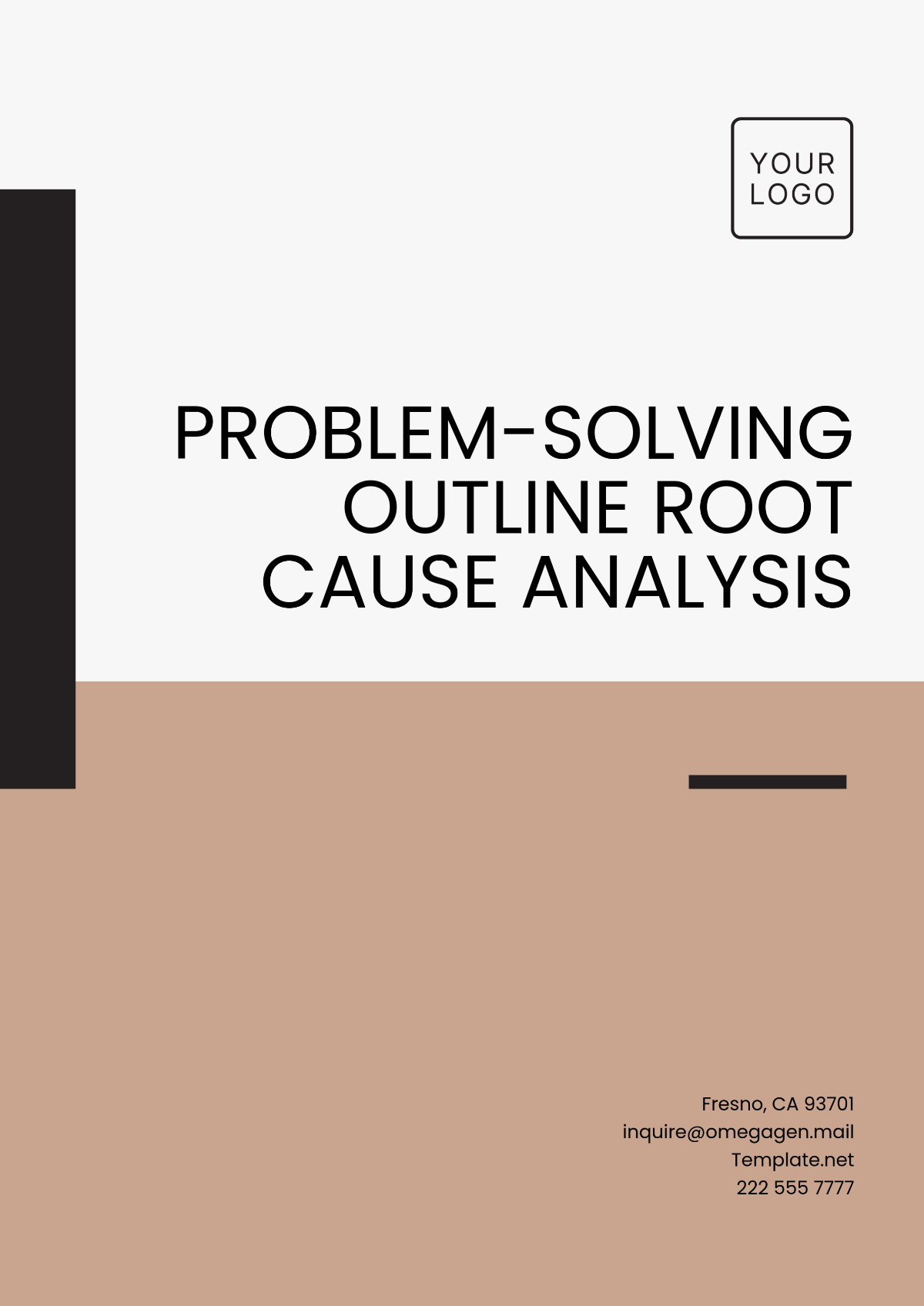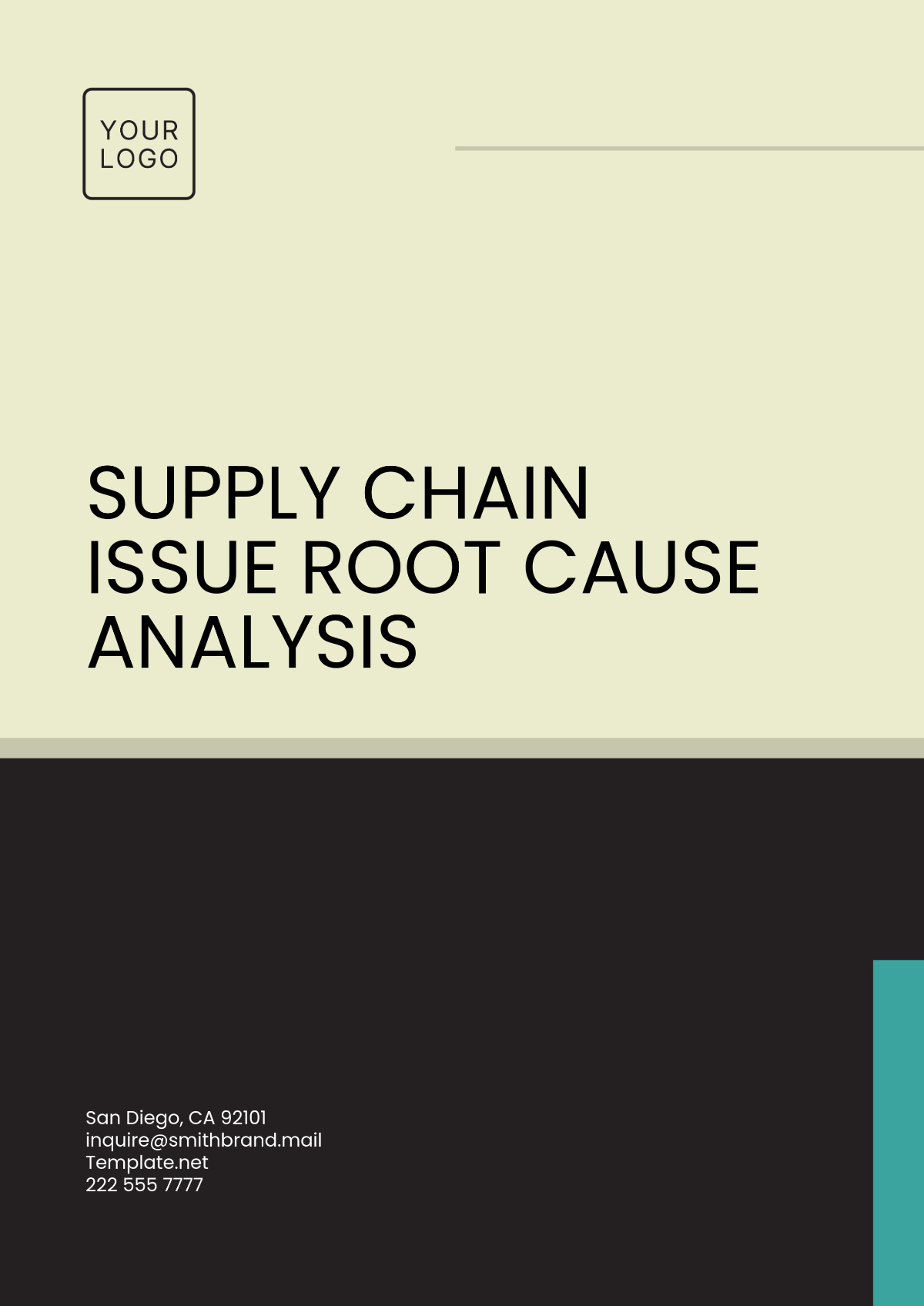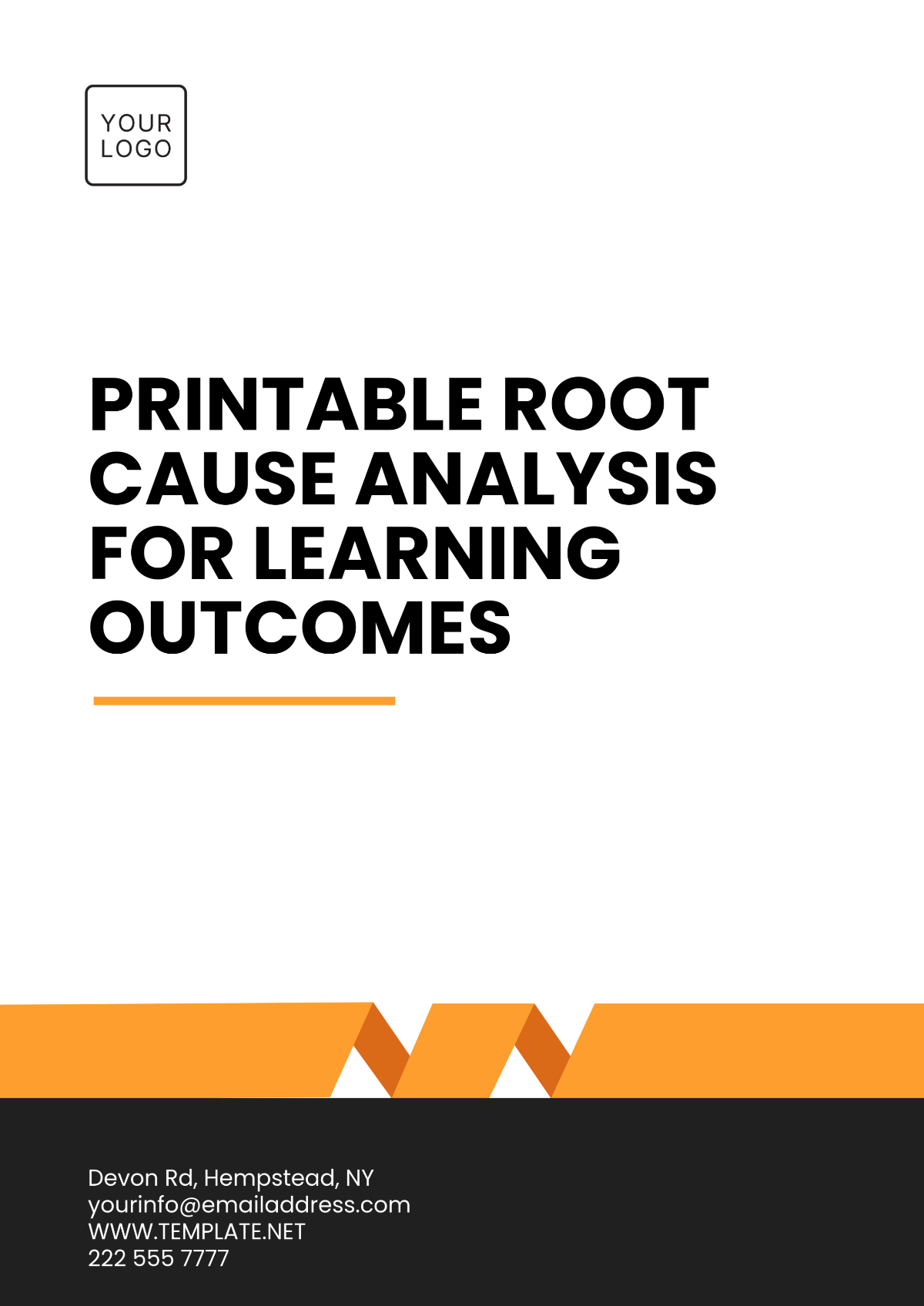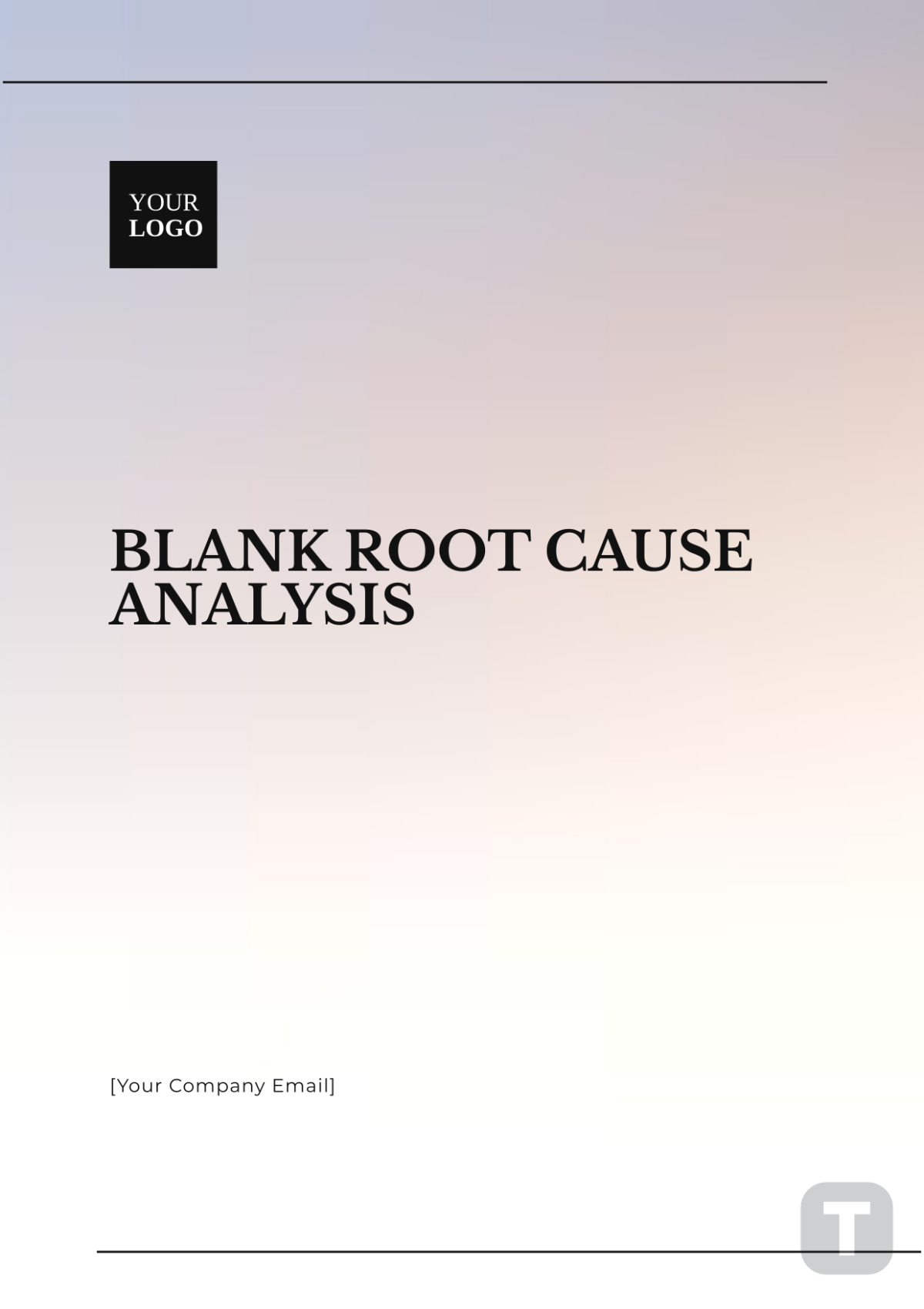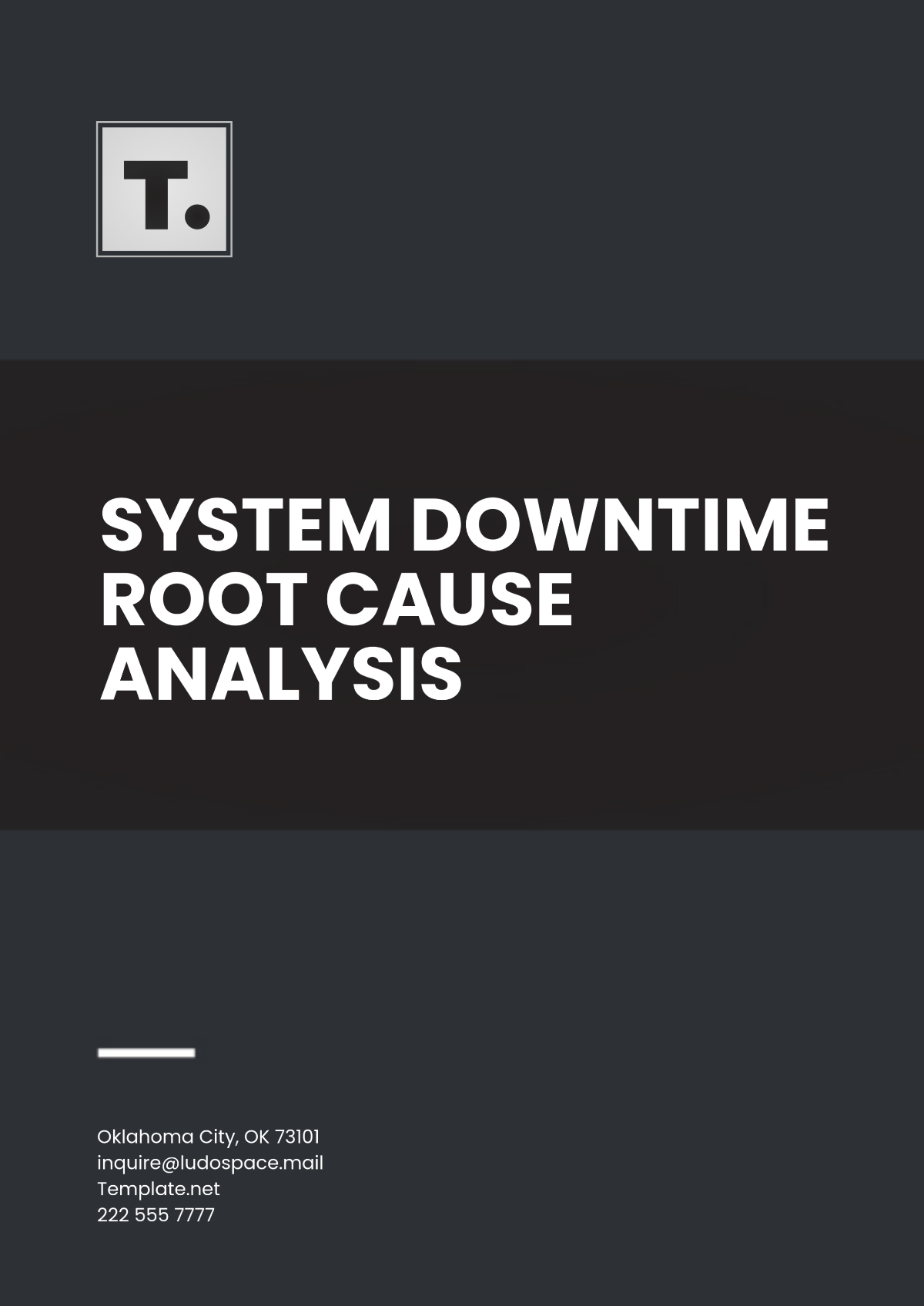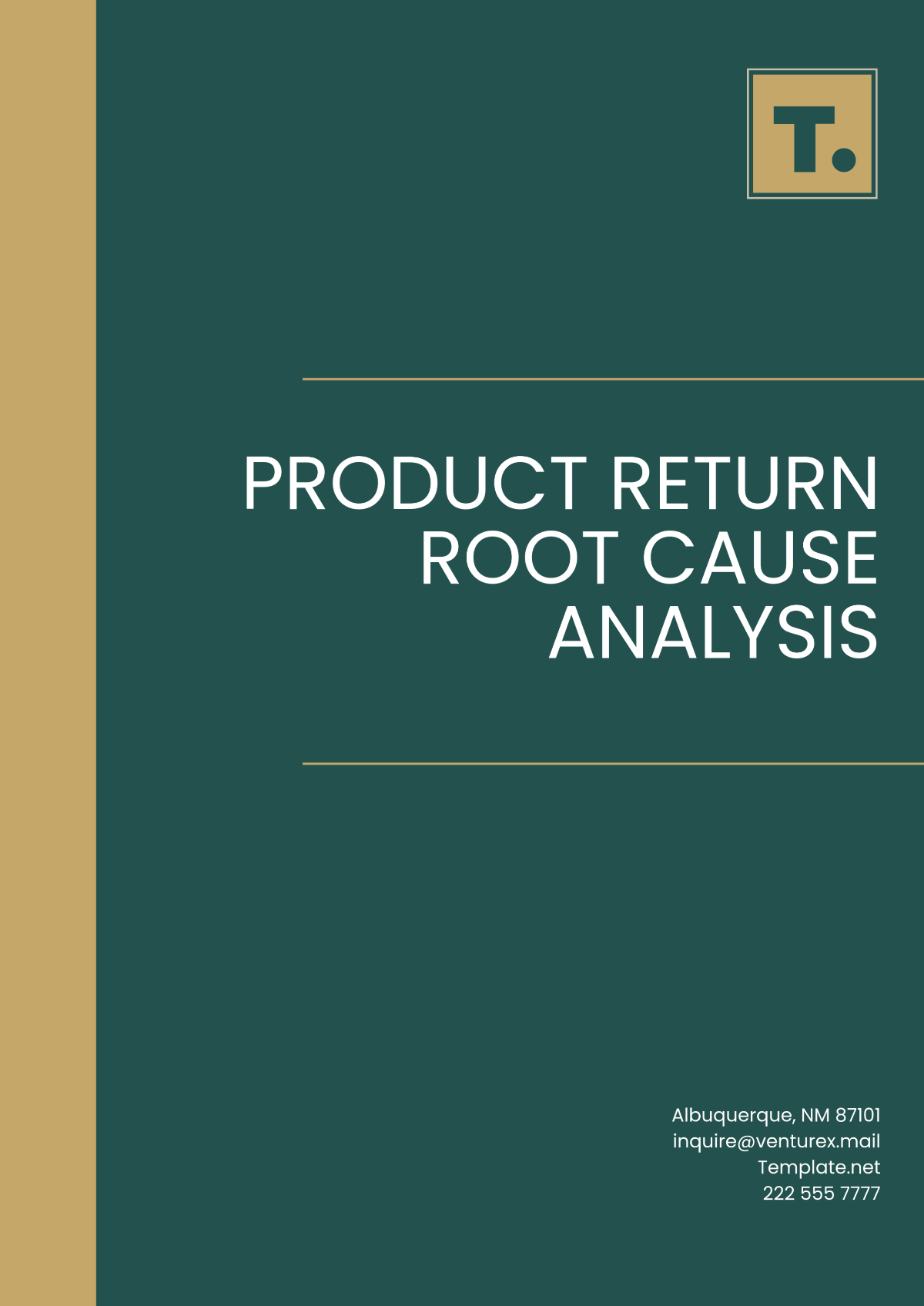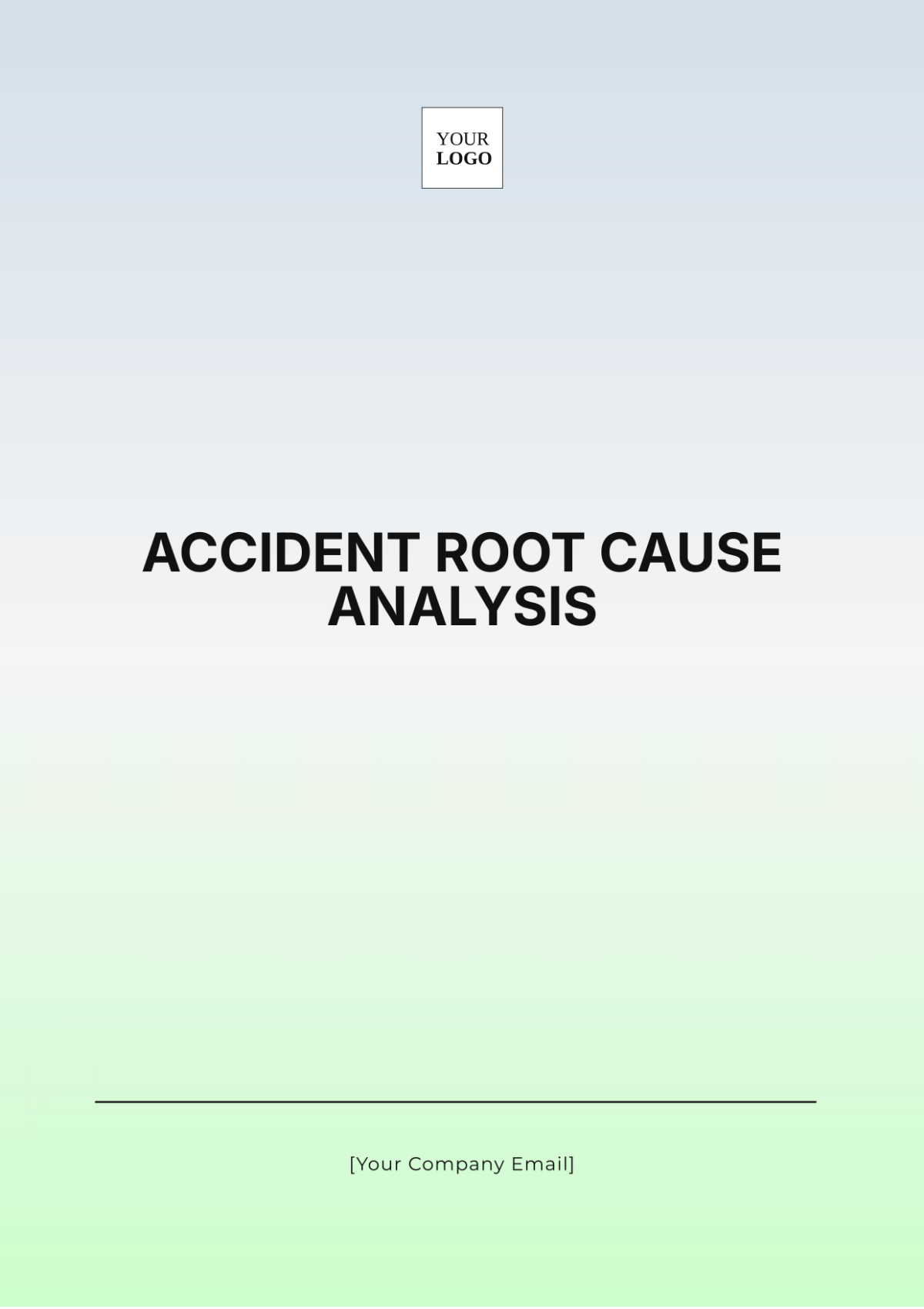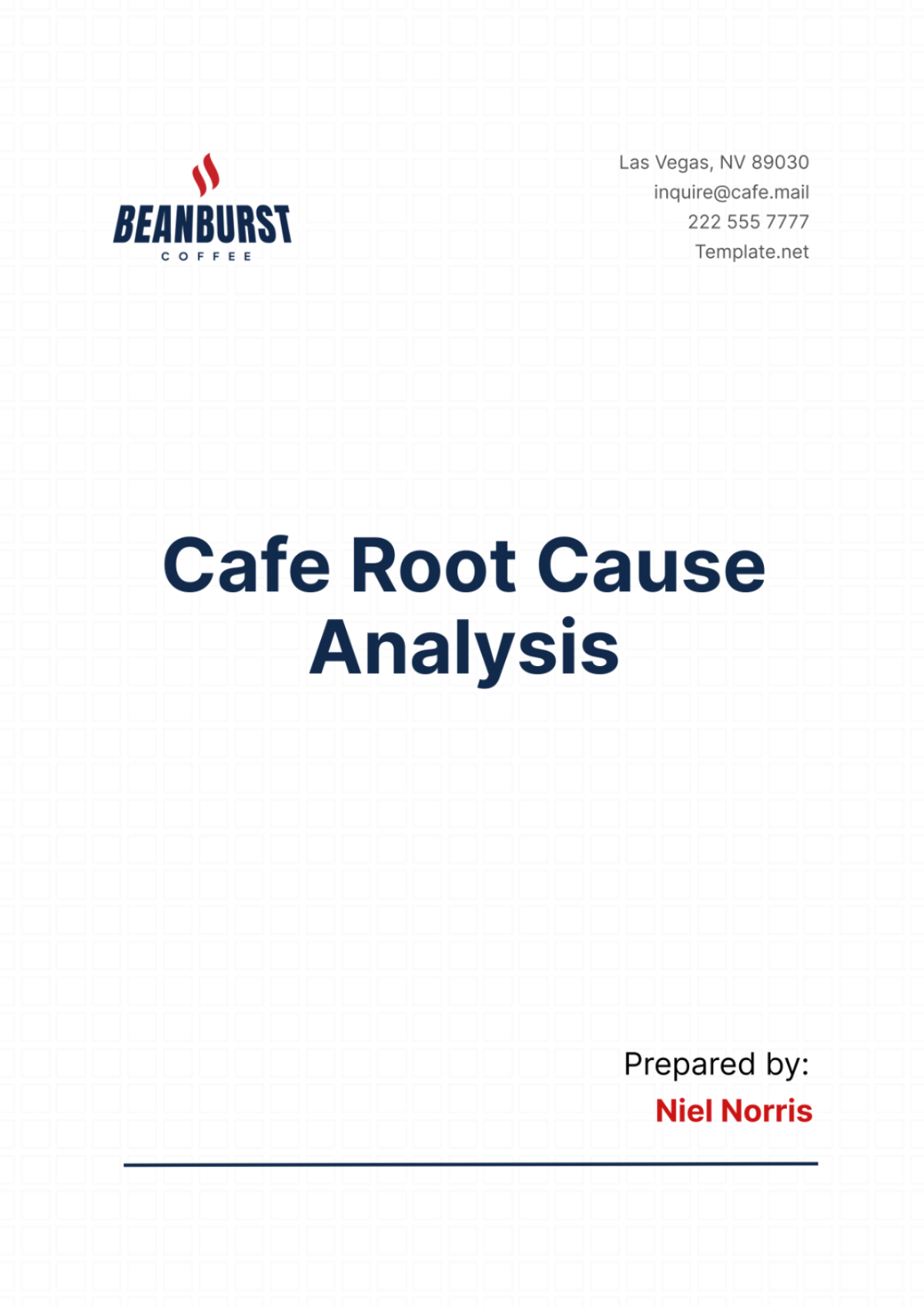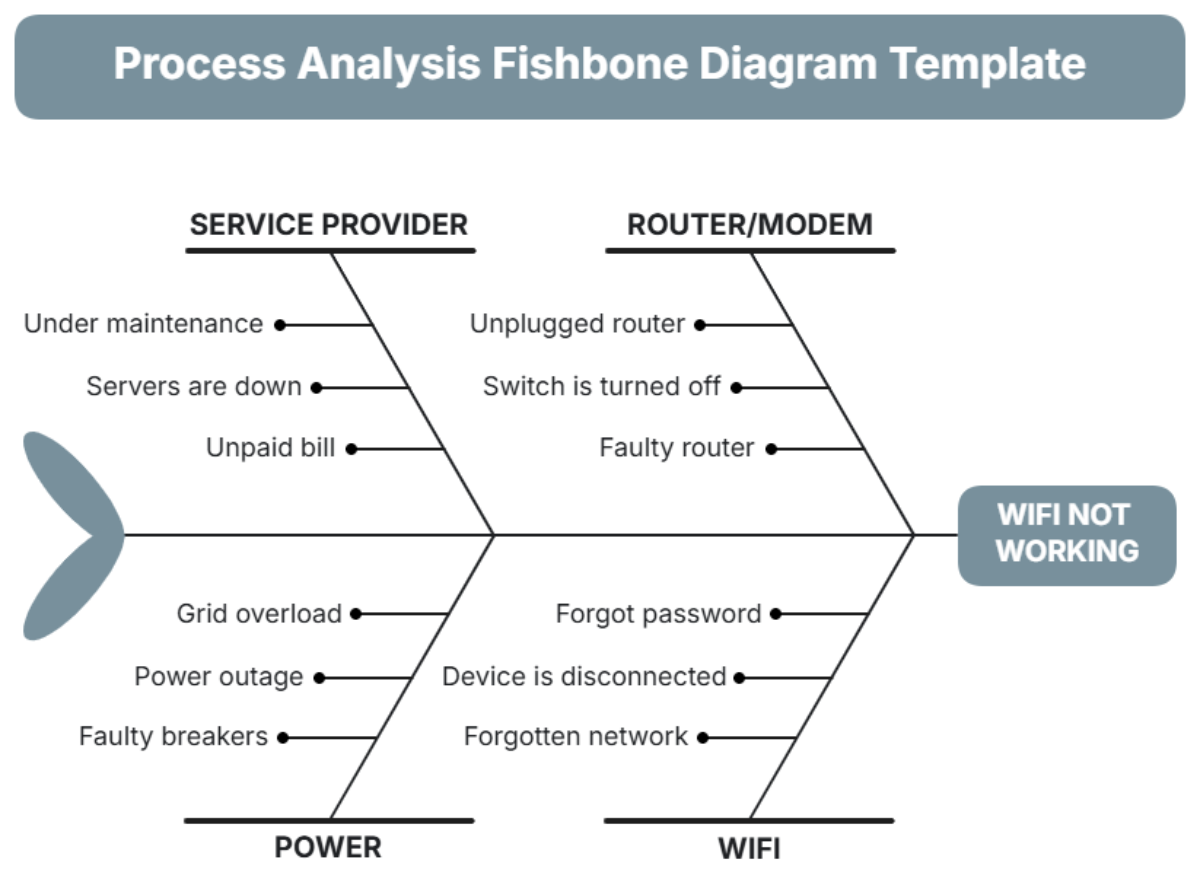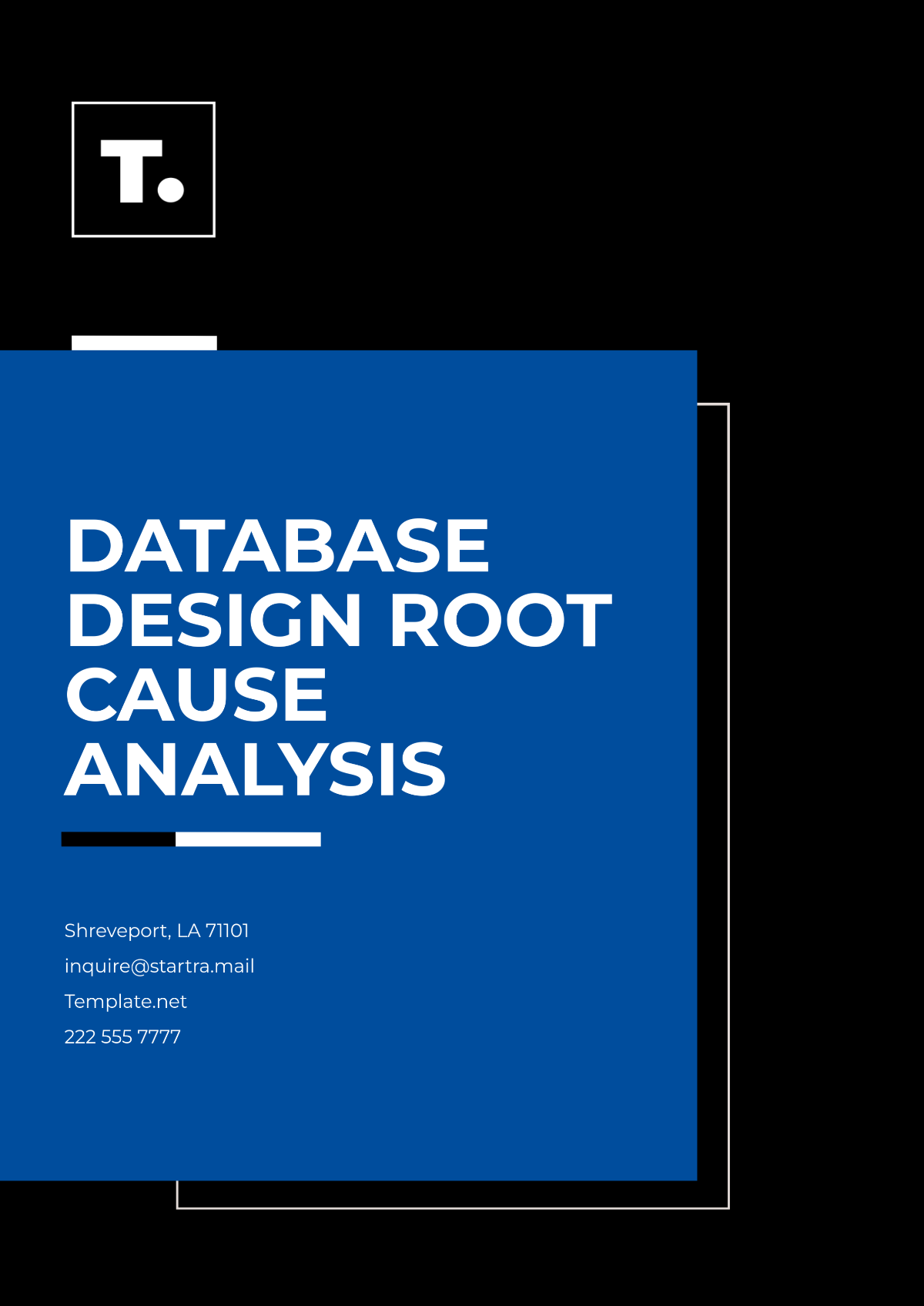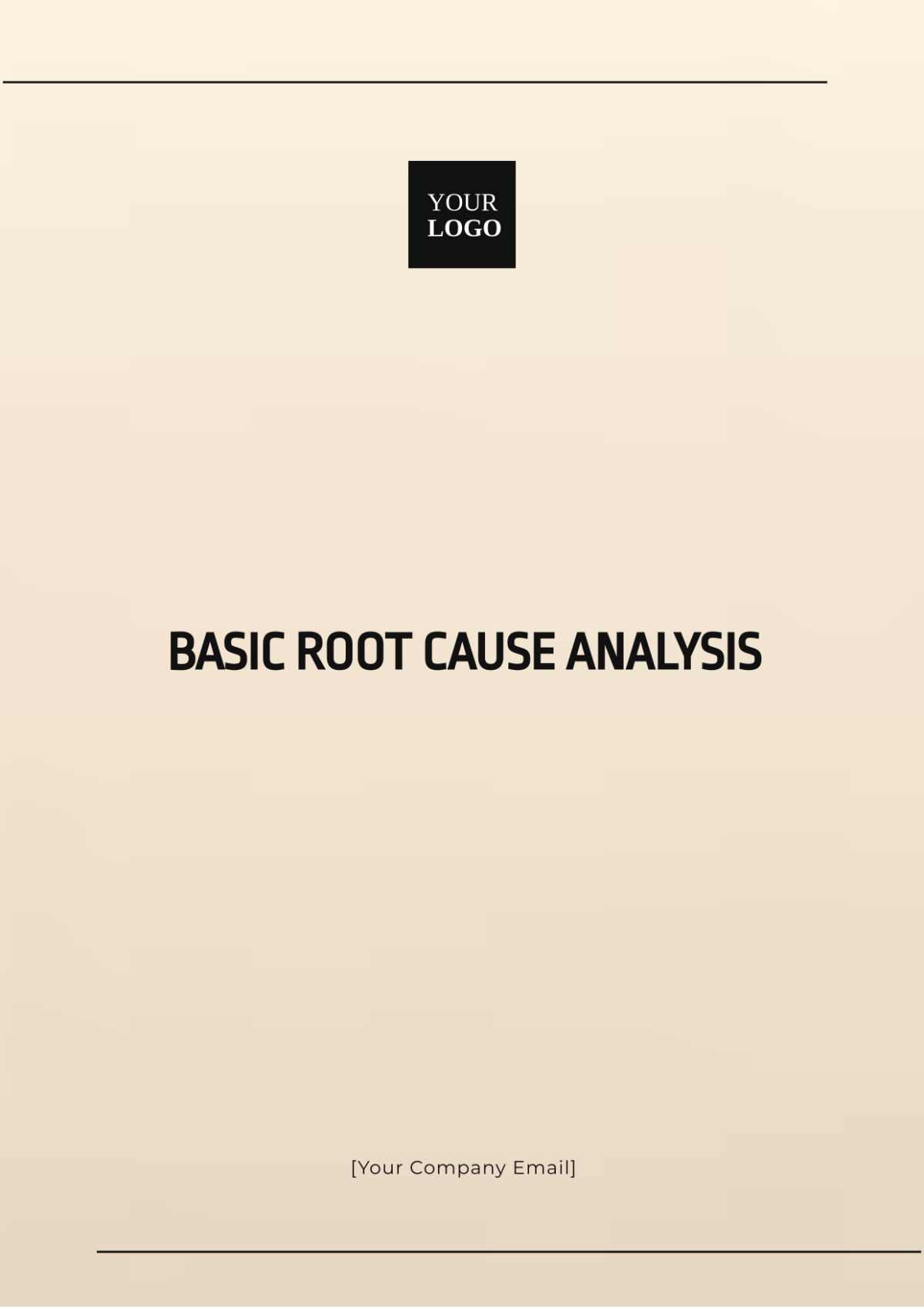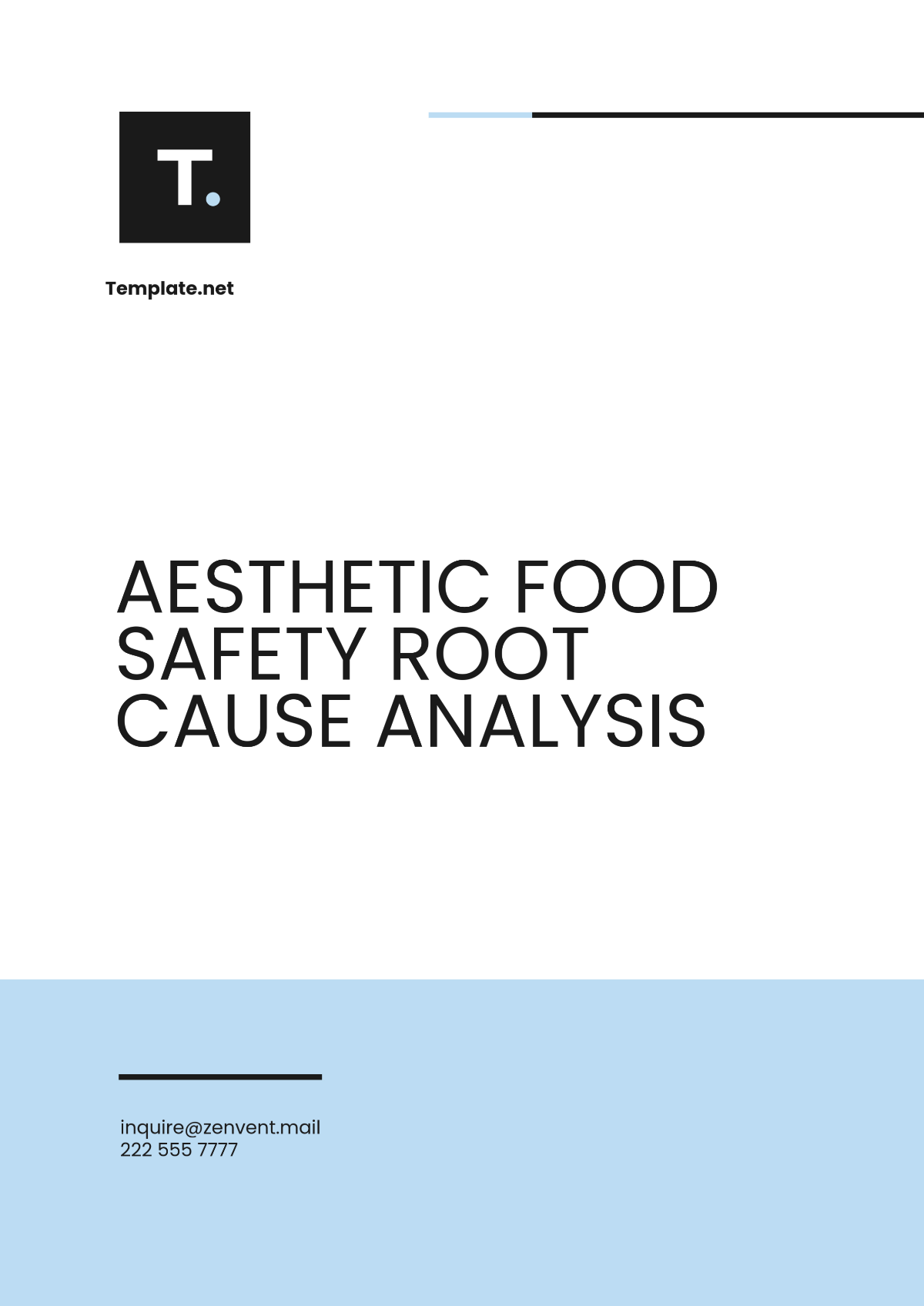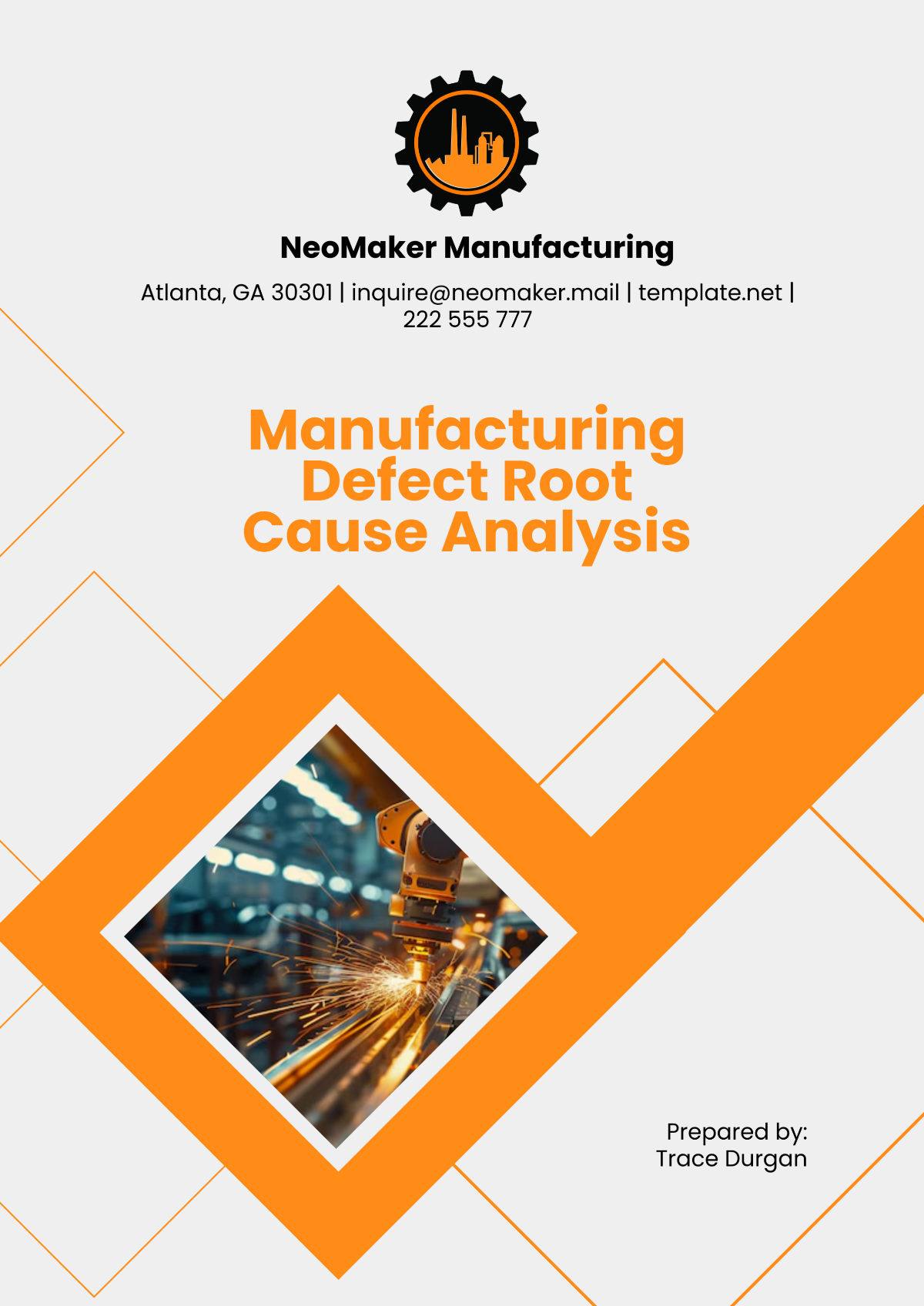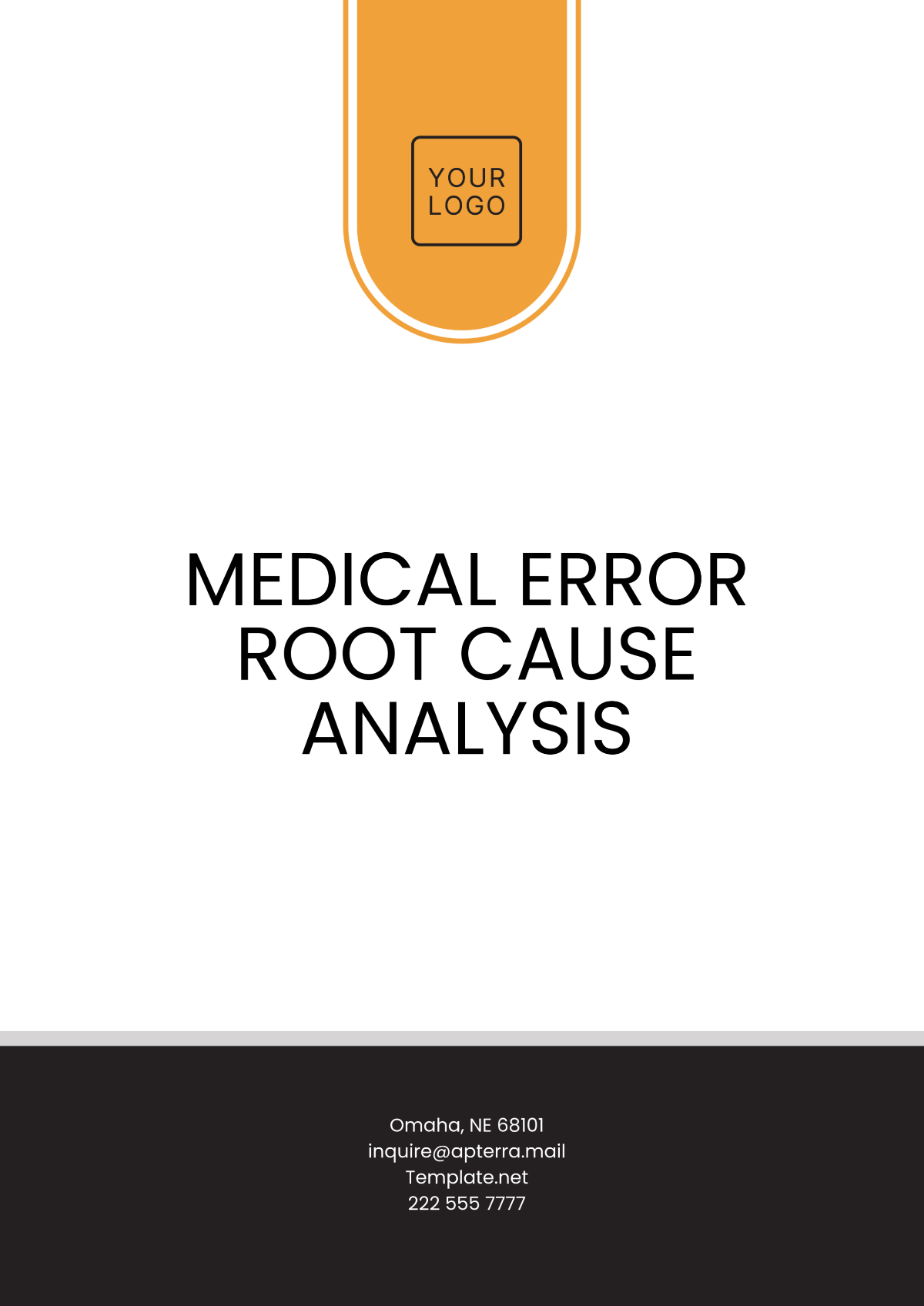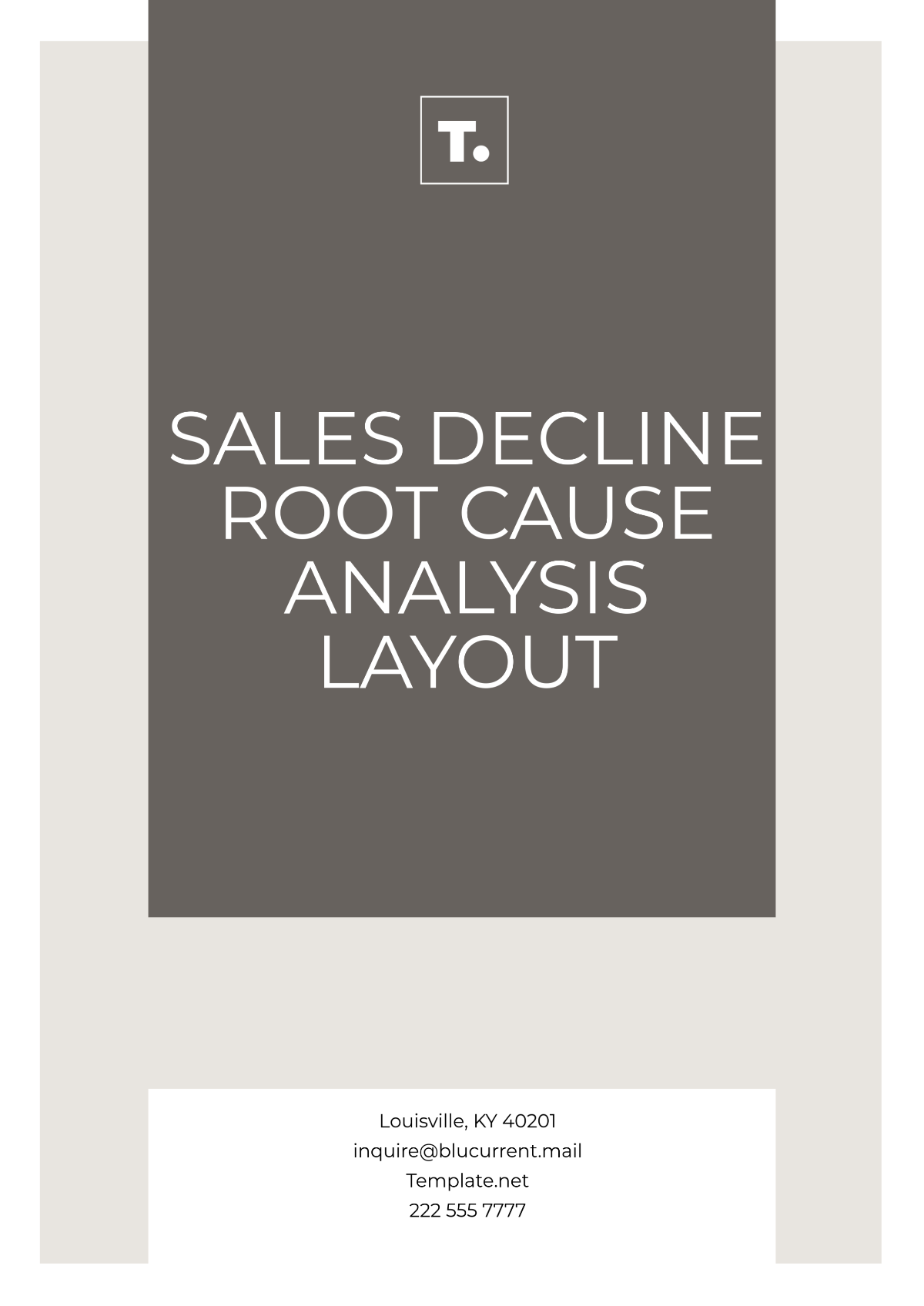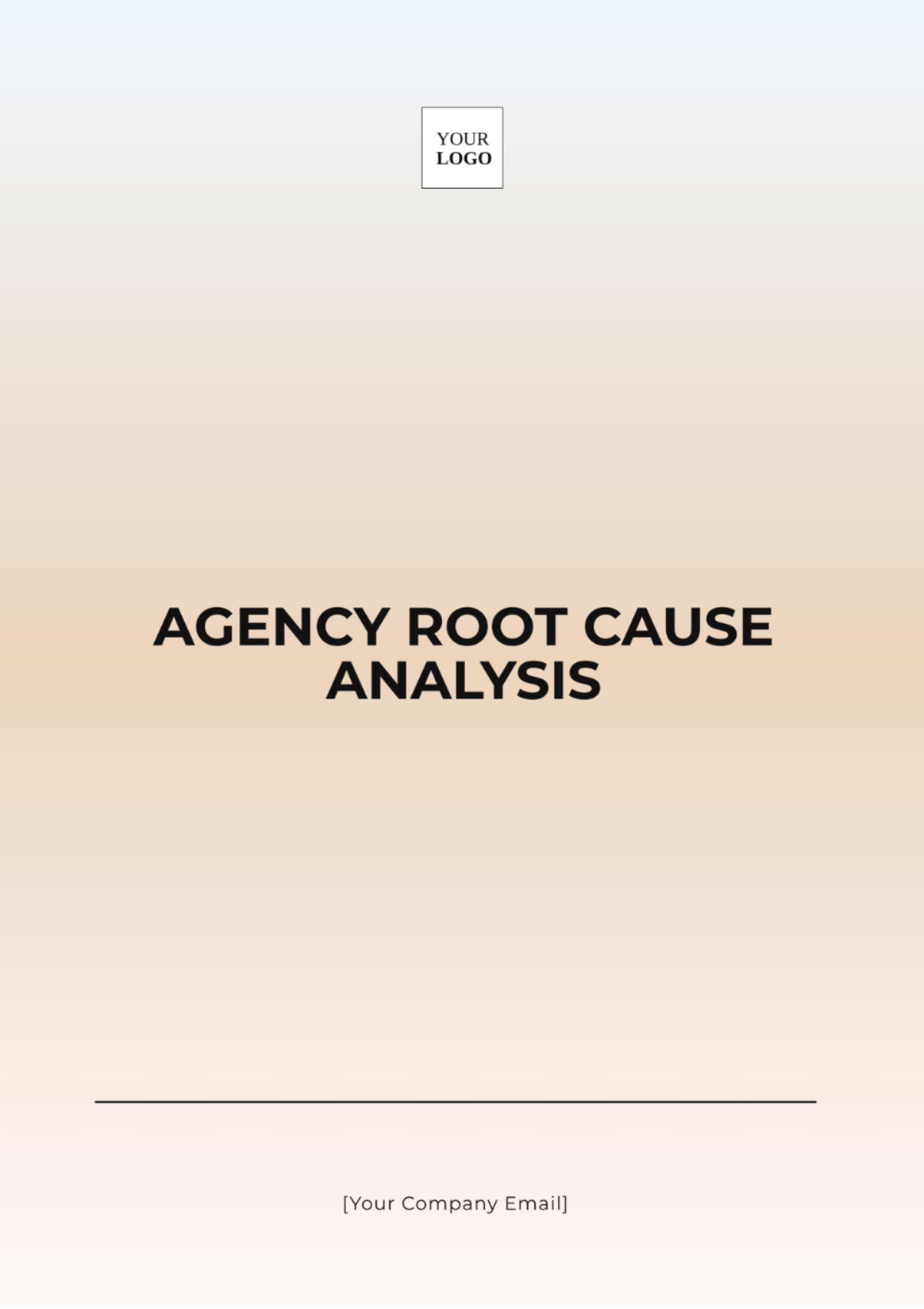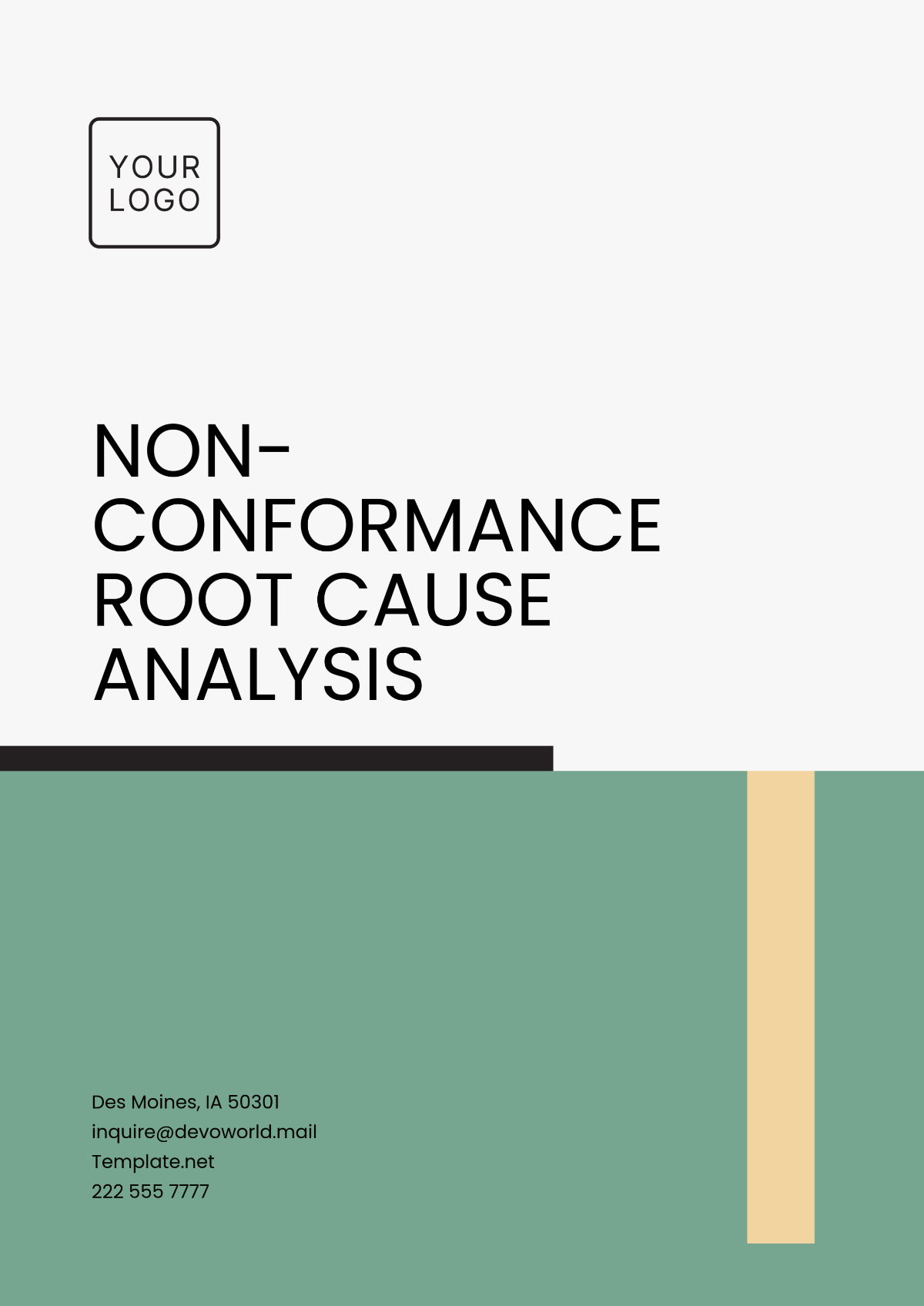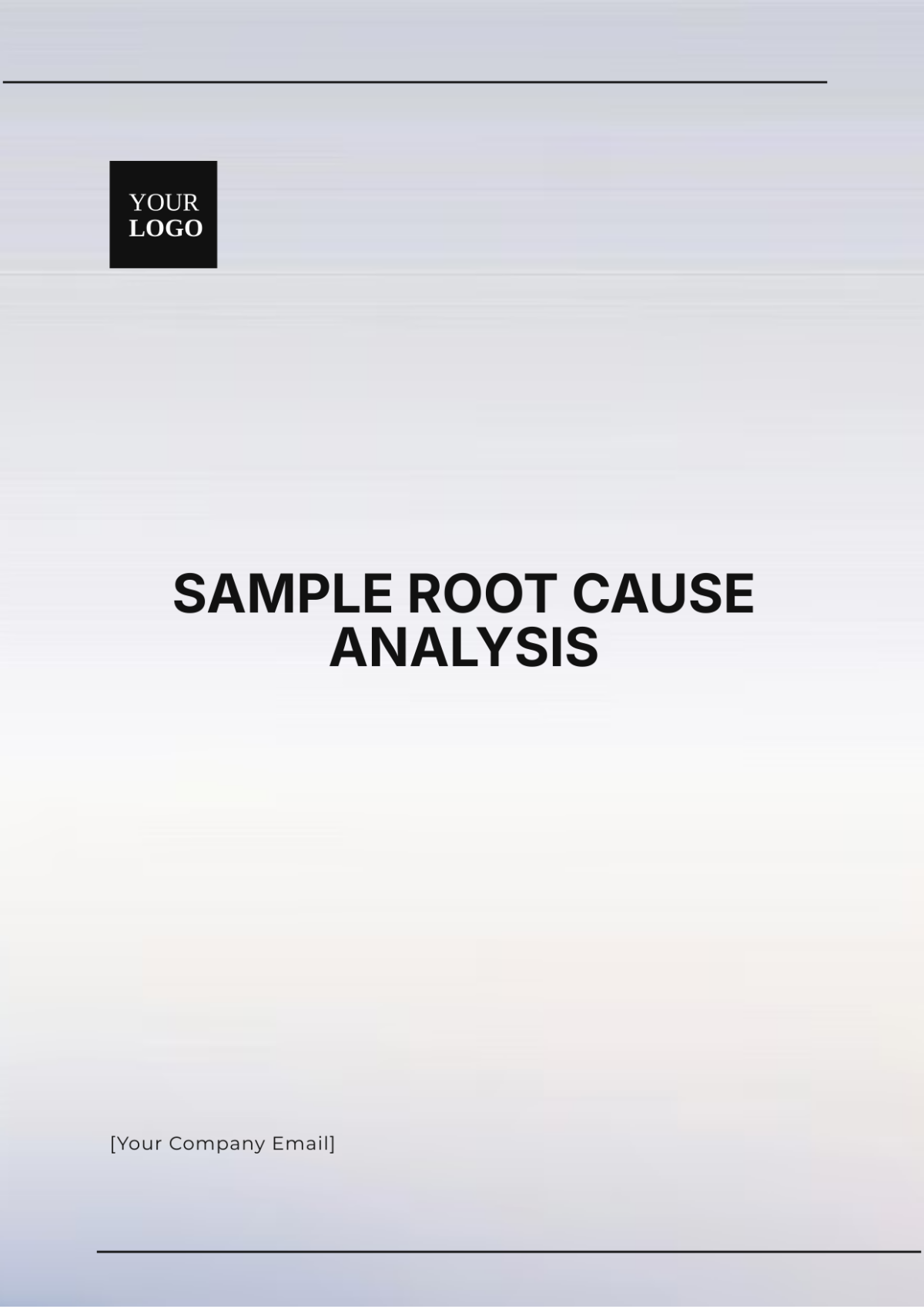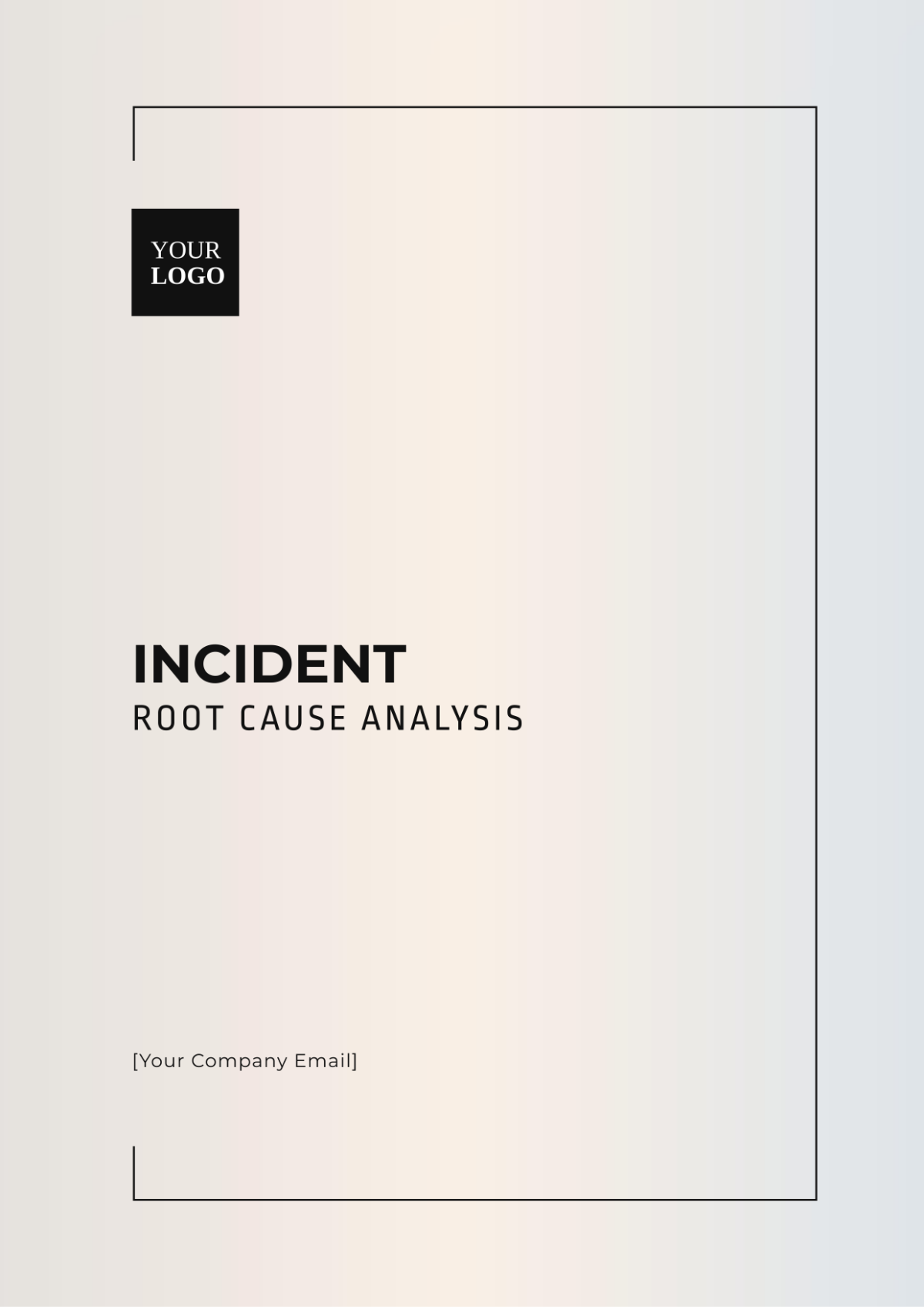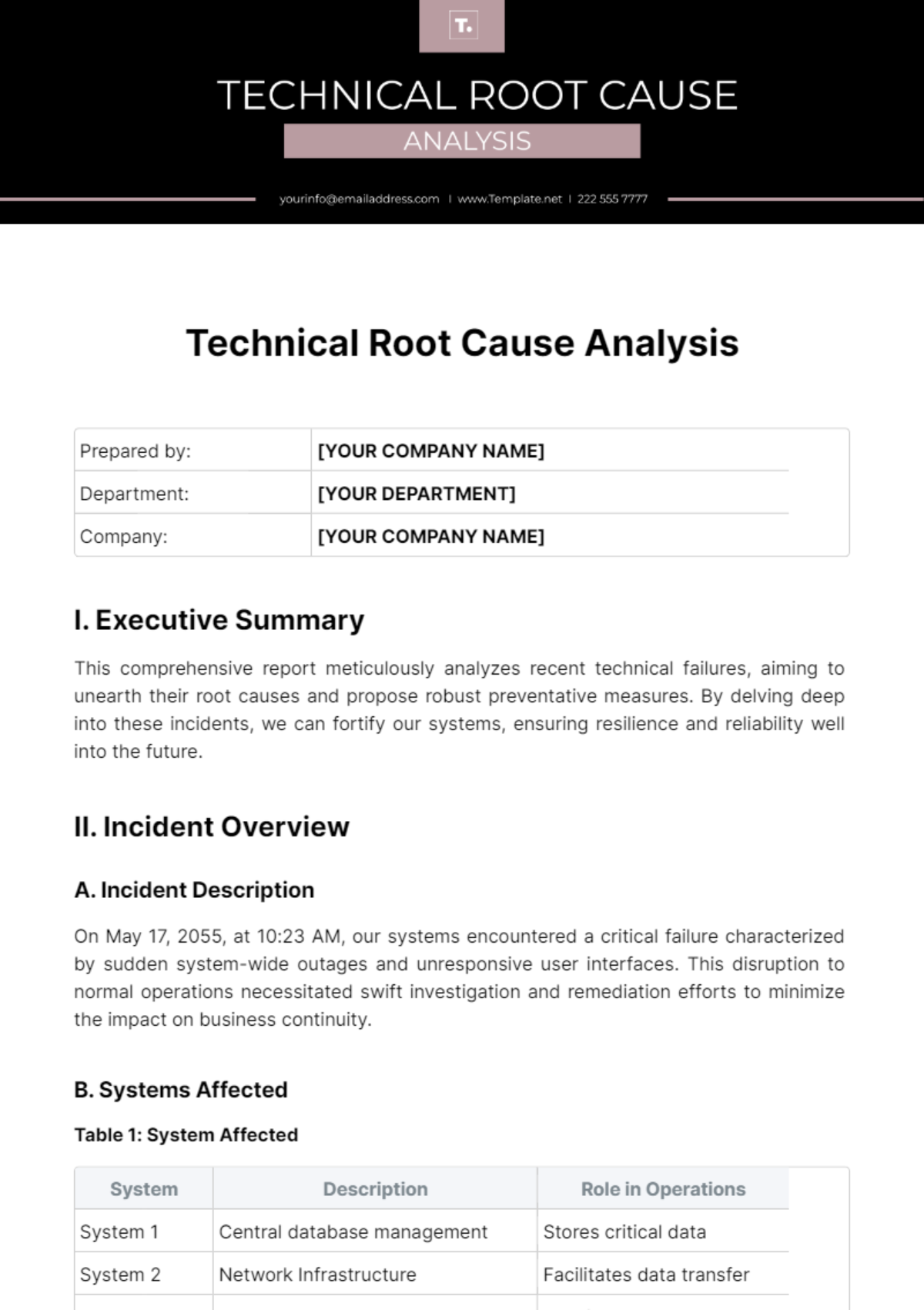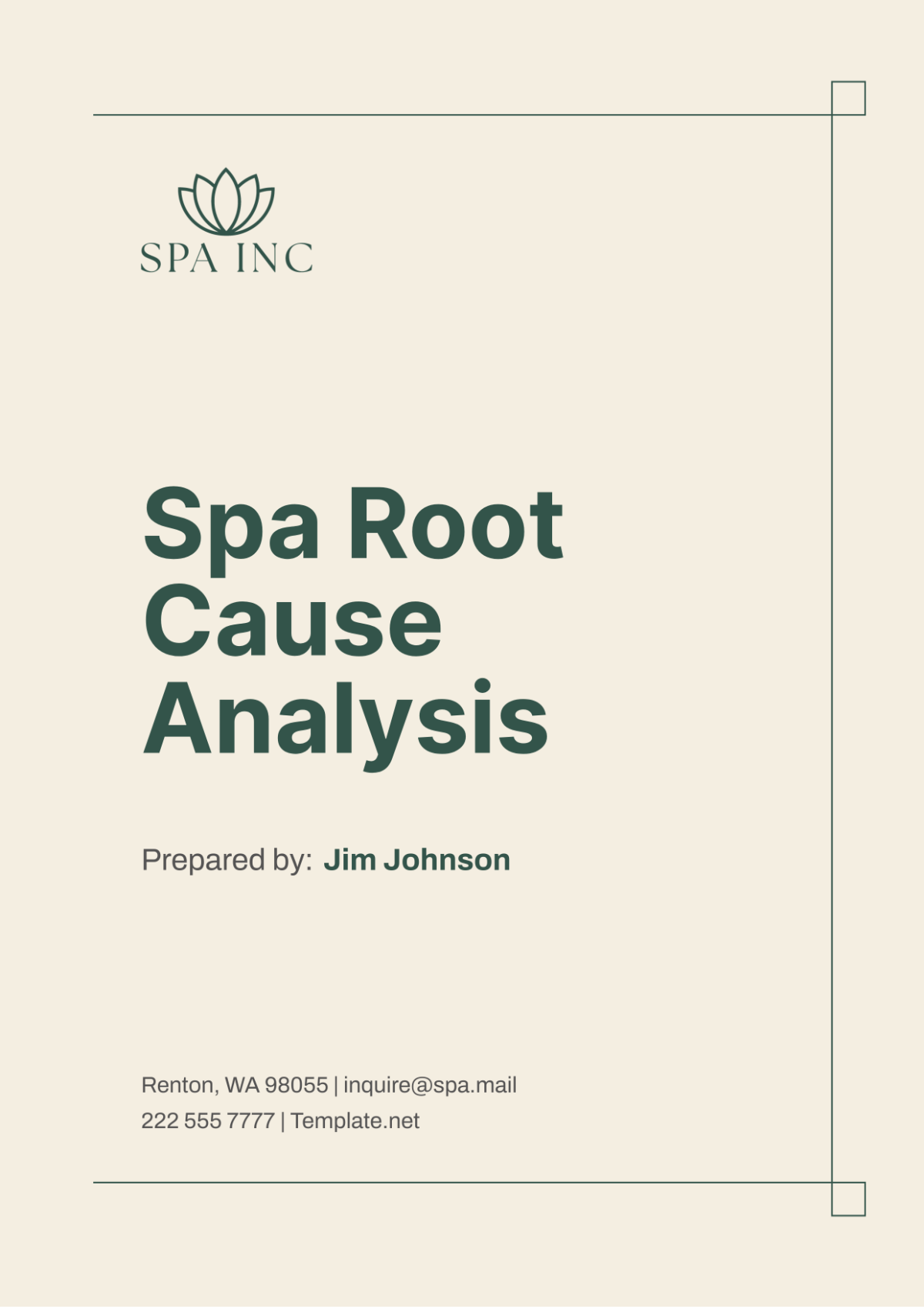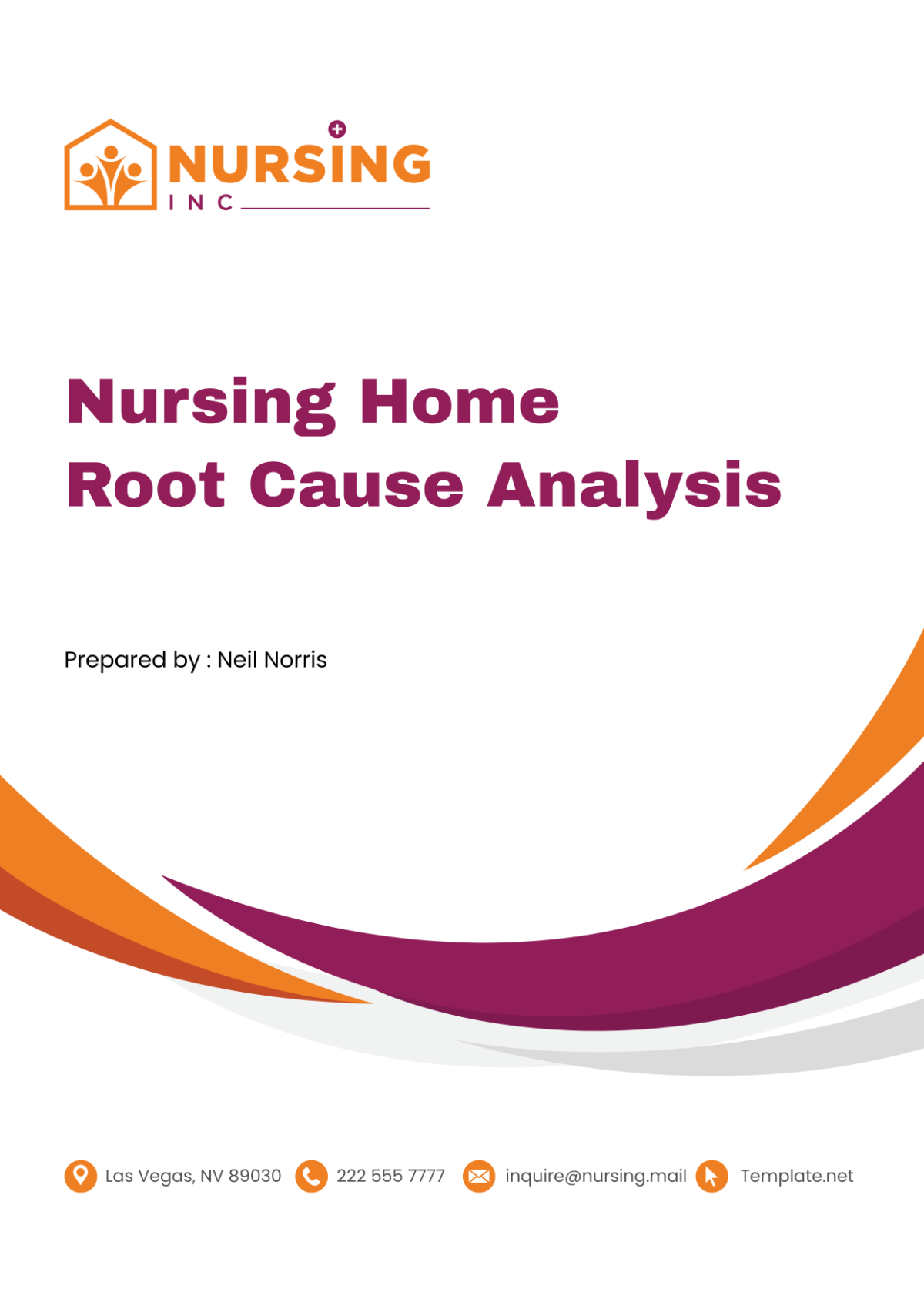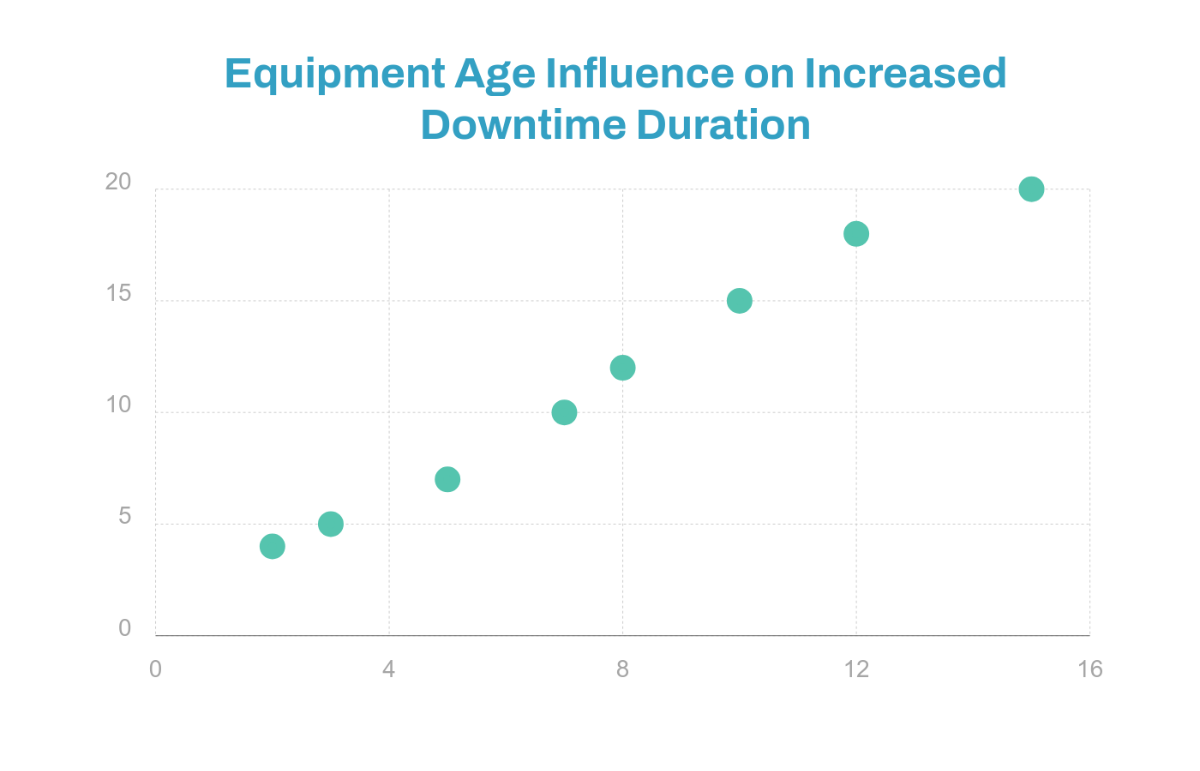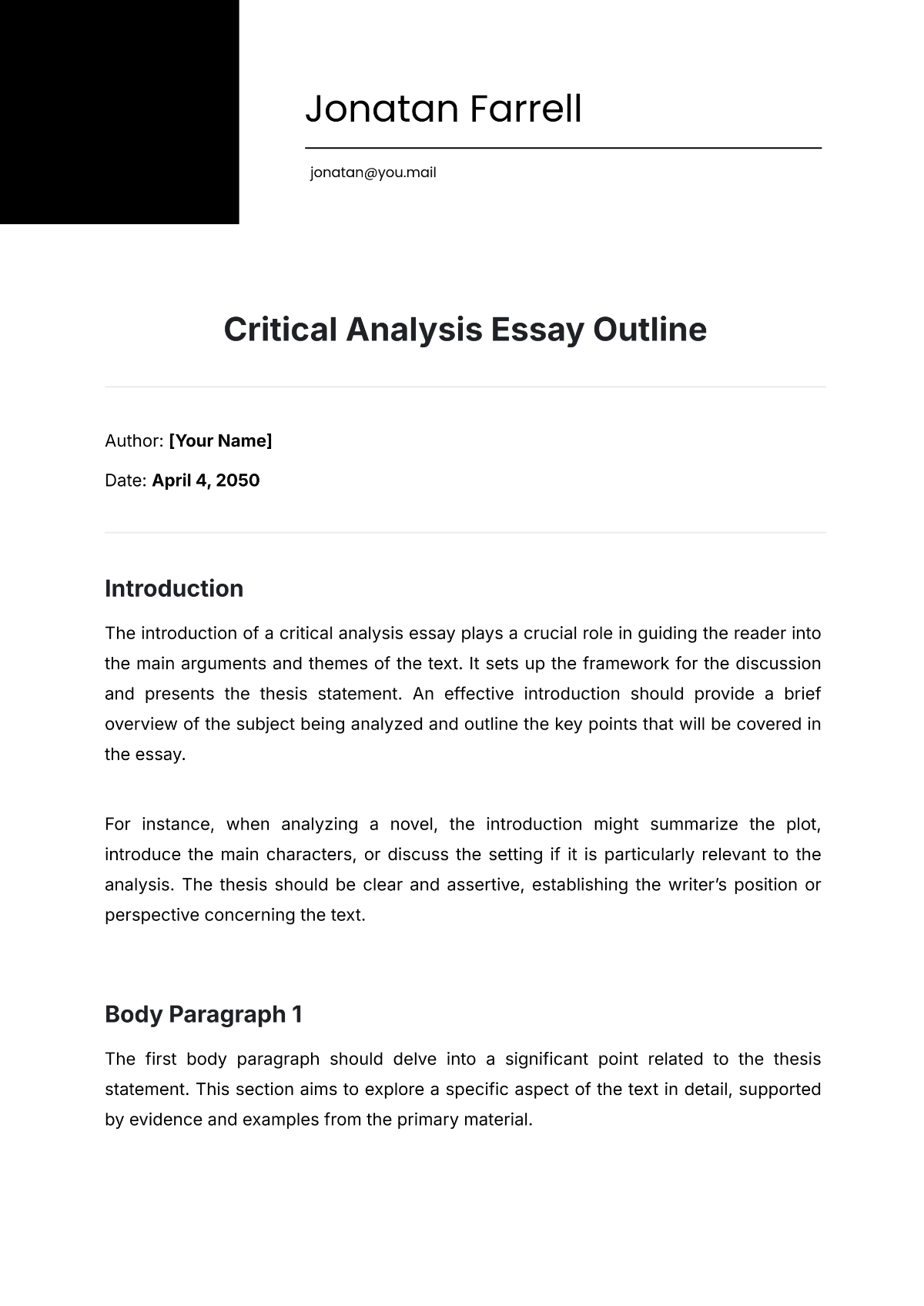Workplace Comprehensive Incident
Analysis Report
Incident Description
A. Incident Summary
On [December 22, 2050], at approximately [10:04 AM], a significant workplace incident occurred at our [Your Company Name] located at [Your Company Address]. This incident involved a machinery malfunction, resulting in an employee injury and production disruption. This report aims to provide a comprehensive analysis of the incident, its root causes, impact, and recommendations for preventing future occurrences.
B. Incident Background
Prior to the incident, the [Your Company Name] had been experiencing intermittent issues with the CNC (Computer Numerical Control) machining equipment. Several maintenance requests had been submitted by operators regarding unusual noises and vibrations coming from the machinery. These issues were addressed with ad-hoc repairs, but a systematic assessment was not conducted.
The CNC machine involved in the incident was a crucial component of our production line. It was responsible for precise machining operations, and any malfunction could have significant implications for our production schedule and product quality.
C. Incident Details
On [December 22, 2050], at approximately [10:04 AM],], during a routine machining operation, the CNC machine (Model: CNC-2000) suddenly malfunctioned. The machine's spindle assembly became detached, causing a violent mechanical failure. This resulted in a projectile being ejected from the machine, striking an operator, [Employee Name], on her left leg.
[Employee Name], a dedicated employee with five years of experience at Smith Manufacturing Inc., was immediately provided with first aid by her colleagues. She was subsequently transported to the local hospital for further medical attention. Sarah's injuries were diagnosed as a fractured left leg, requiring surgical intervention and an extended period of recovery.
Investigation and Analysis
A. Root Cause Analysis
A comprehensive root cause analysis was conducted to identify the underlying factors contributing to the incident. The analysis revealed the following root causes:
Lack of Preventive Maintenance
The primary root cause of this incident was the lack of a structured preventive maintenance program for the CNC machines. While the issues with the equipment were intermittently reported, there was no established maintenance schedule in place to address these concerns proactively. This oversight allowed the underlying problems to escalate until they culminated in a catastrophic failure.
Preventive maintenance is a fundamental practice that involves regular inspections, lubrication, calibration, and the proactive replacement of worn or damaged parts. It is a cornerstone of equipment reliability and safety.
To address this deficiency, we must emphasize the significance of preventive maintenance as an ongoing commitment to equipment safety. Regular inspections and maintenance activities should be documented and reviewed regularly.
Inadequate Training
While [Employee Name] was an experienced operator, the incident highlighted the inadequacy of formalized training programs regarding equipment troubleshooting and emergency response. Operators like Sarah should not only be proficient in machine operation but also trained to recognize early signs of equipment malfunction and respond effectively in emergency situations.
Training programs should be comprehensive and ongoing, ensuring that operators remain well-prepared to handle unexpected situations. The goal is to empower employees with the skills and knowledge they need to contribute to a safer workplace.
As part of corrective action, we recommend the development of a detailed training program that encompasses not only the operation of machinery but also the identification of potential issues, emergency protocols, and efficient reporting procedures.
B. Contributing Factors
In addition to the root causes, several contributing factors were identified:
Ineffective Communication
The incident revealed that communication between operators and maintenance personnel was suboptimal. Operators were hesitant to report equipment issues due to concerns about potential repercussions, and this led to inadequate reporting of problems.
Effective communication is the linchpin of safety in any workplace. Establishing clear channels for reporting problems, concerns, and incidents, while ensuring a culture of trust and non-retaliation, is essential to maintaining a safe working environment.
As part of our recommendations, we must underscore the importance of open and transparent communication within the organization. We should encourage employees to report problems promptly, and mechanisms should be in place to ensure that reports are reviewed and acted upon without delay.
Absence of Redundancy
The CNC machine in question was a critical component of our production line. Unfortunately, the absence of redundancy in our manufacturing processes meant that when the machine failed, there were no alternative means to continue production.
Redundancy planning involves evaluating the criticality of equipment and processes and considering backup solutions or alternative production methods to minimize disruptions in case of failures. In this incident, the absence of such planning had significant implications for our production schedule and customer commitments.
As part of corrective action, we must explore options for redundancy in critical production equipment. Redundancy planning is not just about having backup equipment but also establishing procedures and protocols for switching to alternative methods in the event of equipment failures.
C. Impact Assessment
The incident had several tangible and intangible impacts on our operations:
Production Downtime
The CNC machine was out of commission for five days while repairs and inspections were conducted. This resulted in a loss of approximately $250,000 in production revenue.
Production downtime is a significant concern for manufacturing organizations. Beyond the immediate loss of revenue, it can lead to cascading effects such as delayed orders, customer dissatisfaction, and strained relationships with clients.
The financial impact of production downtime underscores the importance of effective preventive maintenance and redundancy planning. By investing in these areas, we can minimize the risk of future disruptions and revenue losses.
Employee Morale
The incident had a palpable impact on employee morale within the facility. News of the accident created anxiety and unease among the workforce, who were concerned about their safety while operating machinery.
Employee morale is a critical factor in workplace productivity and job satisfaction. An incident like this can lead to reduced morale, decreased productivity, and potentially higher employee turnover.
To address these concerns, we must focus on fostering a culture of safety and providing ongoing support and communication to employees. This includes regular safety training and mechanisms for employees to voice their concerns without fear of reprisal.
Medical Costs
The medical expenses associated with [Employee Name]' treatment amounted to $15,000. Fortunately, these costs were covered by our company's health insurance policy.
While the financial impact was mitigated by insurance coverage, it serves as a reminder of the importance of robust health and safety programs to prevent workplace injuries and illnesses. Investing in employee well-being can lead to cost savings in the long run.
The coverage of medical costs highlights the significance of having comprehensive health and safety measures in place. Ensuring that employees have access to medical care and support in the event of injuries is a crucial aspect of our commitment to their well-being.
Reputational Damage
While difficult to quantify, there was a potential for reputational damage to our organization. News of workplace incidents can spread, impacting our image both within the industry and among our existing and potential clients.
Reputational damage can have far-reaching consequences, affecting customer trust, brand perception, and even the ability to attract and retain top talent.
To mitigate reputational risks, we must focus on transparency and communication. Openly addressing the incident with clients, suppliers, and the public can demonstrate our commitment to safety and responsible business practices.
Recommendations
A. Immediate Actions Taken
Following the incident, several immediate actions were taken:
Medical Support
[Employee Name] received prompt medical attention, and her condition was stabilized. She underwent successful surgery and is currently in the rehabilitation phase.
Providing immediate medical support to injured employees is a non-negotiable aspect of workplace safety. Swift action can minimize the severity of injuries and improve the chances of full recovery.
Machine Inspection
In response to the incident, all CNC machines at the facility were immediately inspected by qualified maintenance personnel to identify potential issues. These machines were temporarily taken out of service until they were deemed safe for operation.
Machine inspection is a crucial step to prevent further incidents. It ensures that similar issues do not exist in other machines within the facility.
Communication with Stakeholders
Communication with employees, clients, and suppliers was prioritized following the incident. Timely and transparent communication is essential to maintain trust and manage expectations.
Maintaining open channels of communication with stakeholders is crucial. It helps in keeping everyone informed and assures them that safety is our top priority.
B. Corrective Actions
To prevent similar incidents in the future, the following corrective actions are recommended:
Implement Preventive Maintenance Program
A fundamental corrective action is to establish a structured preventive maintenance program for all critical machinery. This program should include regular inspections, lubrication, calibration, and the proactive replacement of worn or damaged parts.
Preventive maintenance is not a one-time effort but an ongoing commitment to equipment safety. The program should have clearly defined schedules, responsibilities, and documentation processes.
To enhance this program further, we must consider investing in predictive maintenance technologies. These technologies can monitor equipment health in real-time, providing early warnings of potential issues.
Training Program
A comprehensive training program should be developed for equipment operators. This program should encompass not only machine operation but also troubleshooting, emergency response, and reporting procedures.
Training should be continuous and include regular knowledge assessments to ensure that operators are well-prepared to handle unexpected situations. The goal is to empower employees with the skills and knowledge they need to contribute to a safer workplace.
Enhancing the training program could involve partnerships with external experts or industry organizations to provide specialized training in equipment safety and emergency response.
Redundancy Planning
The organization should explore options for redundancy in critical production equipment. This includes evaluating the feasibility of backup equipment or alternative production methods to minimize disruptions in case of failures.
Redundancy planning is not just about having backup equipment but also establishing procedures and protocols for switching to alternative methods in the event of equipment failures. We should conduct a thorough risk assessment to identify critical points in our production process and develop redundancy plans accordingly.
C. Preventive Measures
To mitigate the risk of future incidents, the following preventive measures should be implemented:
Incident Reporting Protocol
A clear and well-communicated incident reporting protocol should be implemented. This protocol should encourage employees to report equipment issues promptly and without fear of reprisal.
An effective incident reporting protocol establishes a structured process for reporting problems, ensuring that reports are promptly reviewed and acted upon by the appropriate personnel.
Enhancing our incident reporting protocol could involve the use of digital tools or mobile applications that make it easier for employees to submit reports and track their status.
Equipment Monitoring
Invest in condition monitoring systems for critical equipment. These systems use various technologies, such as vibration analysis, thermal imaging, and real-time sensors, to detect anomalies before they lead to failures.
Equipment monitoring provides valuable data on equipment health, allowing for early detection of abnormalities and timely maintenance or repairs. To enhance this measure, we could consider the implementation of artificial intelligence (AI) and machine learning (ML) algorithms that can predict equipment failures based on historical data.
Safety Culture
Fostering a strong safety culture within the organization is essential. This includes creating an environment where safety is a top priority, and employees are encouraged to actively participate in safety initiatives.
A robust safety culture goes beyond policies and procedures; it reflects the organization's commitment to the well-being of its employees. To enhance our safety culture, we could establish safety committees or engage employees in safety-related decision-making processes.
Lessons Learned
This incident serves as a powerful learning experience for our organization. It highlights critical lessons that can shape our approach to workplace safety and risk management.
A. Proactive Maintenance
One of the fundamental takeaways from this incident is the importance of proactive maintenance. Regular inspections, preventive maintenance programs, and timely repairs are not optional but essential practices in ensuring the safety and reliability of equipment.
Proactive maintenance is an ongoing commitment that requires resources, planning, and dedication. It is an investment in the longevity of equipment and the safety of employees.
To further emphasize the importance of proactive maintenance, we should consider implementing a preventive maintenance certification program for our maintenance personnel. This program would ensure that our maintenance team is well-trained and certified in best practices.
B. Communication and Reporting
Effective communication and reporting are cornerstones of a safe workplace. The incident underscored the need for clear and open channels of communication between employees, especially when it comes to reporting equipment issues or safety concerns.
Creating an environment where employees feel confident in reporting problems without fear of repercussions is paramount. Additionally, establishing a structured incident reporting protocol can streamline the process and ensure that issues are addressed promptly.
C. Training and Preparedness
The incident also demonstrated the critical need for comprehensive training and preparedness. Training programs should not only focus on machine operation but also on recognizing early warning signs of equipment failure, emergency response procedures, and effective communication.
Continual training and refresher courses are necessary to keep skills up-to-date and reinforce the importance of safety protocols. By investing in ongoing education and training, we can ensure that our employees are equipped to handle unexpected challenges and contribute to a safer working environment.
D. Risk Management and Redundancy
The lack of redundancy in our production processes was a significant contributing factor to the impact of the incident. It is essential to identify key areas where redundancy can minimize the risk of production disruption and implement strategies to provide backup solutions.
Risk management should be an integral part of our operational planning. Conducting regular risk assessments to identify potential vulnerabilities and developing contingency plans are crucial steps in mitigating risks.
Implementation Plan
To translate these recommendations into action, a detailed implementation plan is required. This plan should outline the steps, responsibilities, timelines, and resources needed to effectively address the issues identified in this report.
A. Short-term Actions
Immediate safety checks and maintenance of all critical equipment.
Development and launch of an enhanced training program for equipment operators, focusing on safety and emergency response.
Establishment of a clear incident reporting protocol and communication channels.
B. Mid-term Actions
Implementation of a structured preventive maintenance program, with regular audits and updates.
Investment in condition monitoring systems for critical machinery.
Development of redundancy plans for key production processes.
C. Long-term Actions
Regular review and update of safety protocols and training programs.
Continuous investment in safety culture, including employee engagement and feedback mechanisms.
Ongoing assessment and enhancement of risk management strategies.
Conclusion
The incident at [Your Company Name] on [December 22, 2030], serves as a stark reminder of the importance of workplace safety, proactive maintenance, and effective communication. By addressing the root causes and implementing the recommendations outlined in this report, we can significantly reduce the risk of future incidents and ensure a safer, more productive working environment.
This report not only provides a detailed analysis of the incident but also offers a roadmap for continuous improvement in our safety practices and operational protocols. It is crucial that we commit to these actions with the utmost seriousness and dedication, as the safety of our employees and the reliability of our operations depend on it.
Ultimately, the lessons learned from this incident should be integrated into our corporate culture, influencing how we approach safety, maintenance, training, and risk management. By doing so, we honor the commitment to our employees' well-being and uphold our reputation as a responsible and safety-conscious manufacturer.
The journey towards a safer workplace is ongoing, and this report marks a significant step in that journey. With the implementation of these recommendations, Smith Manufacturing Inc. can look forward to a future where incidents like the one on [Date], are significantly less likely to occur, ensuring the well-being of our employees and the sustainability of our operations.

